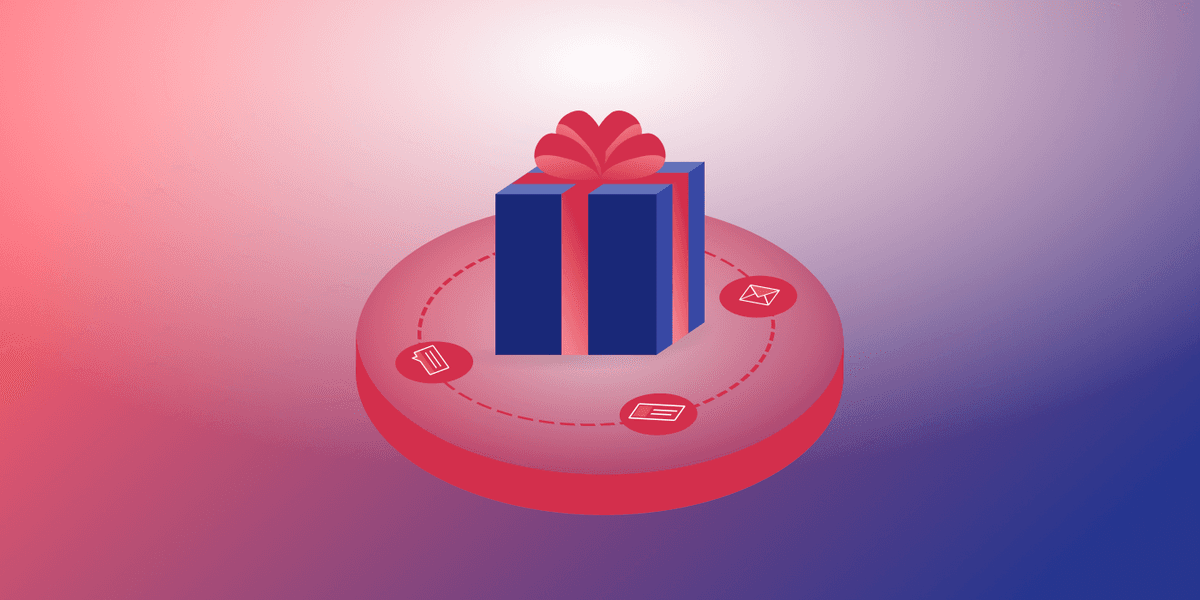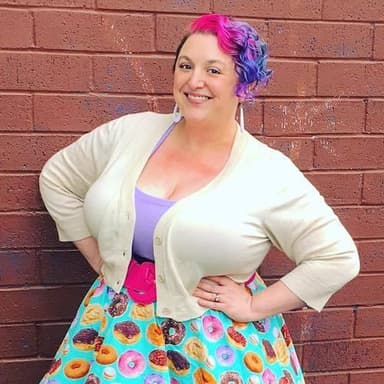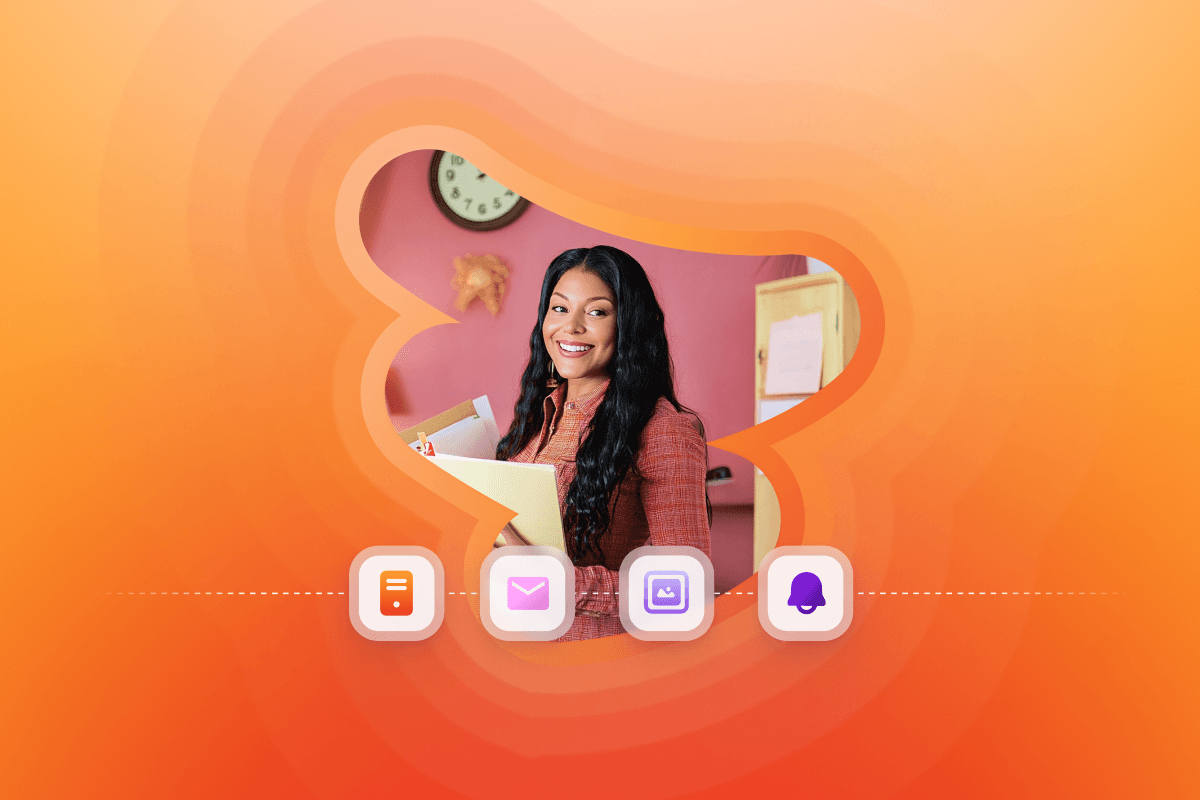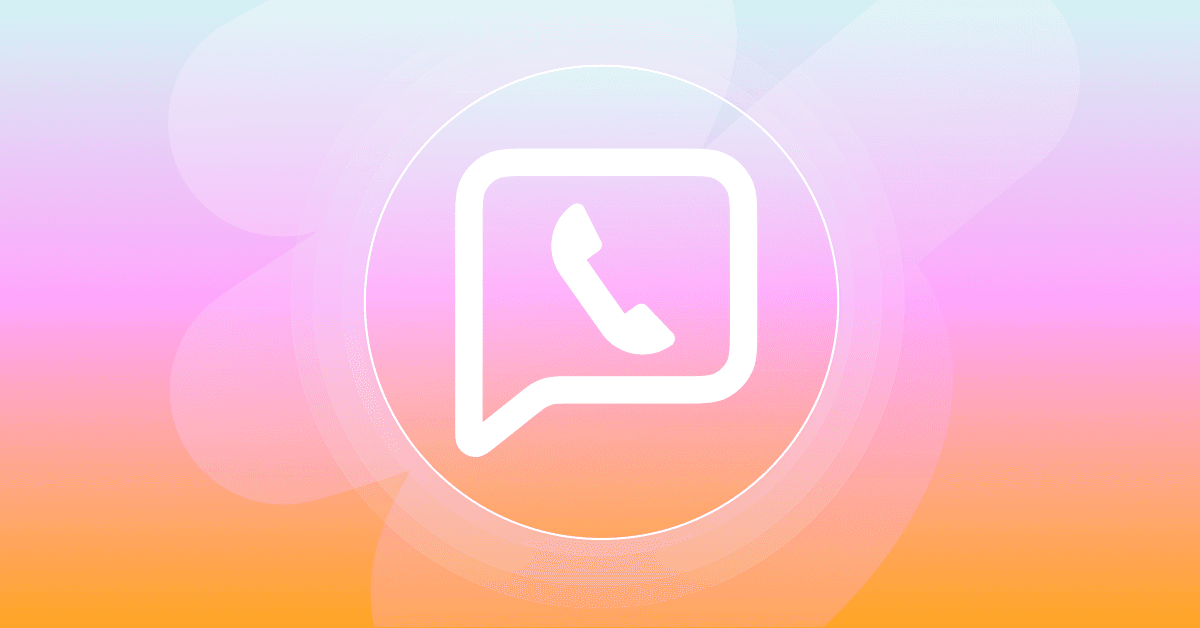Creating Smarter Holiday Campaigns in 2020: Insights from Braze, Looker, and Segment
Published on November 25, 2020/Last edited on November 25, 2020/14 min read


Team Braze
Ah, the holidays! That special time of year when families come together, gifts are exchanged, and retail kicks into hyperdrive as consumers seek out the latest deals and brands work to capitalize on the year’s peak shopping period. It’s safe to say that the holiday season is circled in red on every marketing department’s schedule as a time when effective messaging is critically important.
Of course, as with just about everything else in our lives this year, the 2020 holiday season is going to be something of a different beast. As much of the world wrestles with the global COVID-19 pandemic, many traditional holiday rituals are being thrown into flux, and that includes consumers’ shopping habits, which are likely to shift into the online arena due to the safety concerns that would come with the typical end-of-year store crowds.
Navigating this constantly shifting, unfamiliar terrain in a way that maximizes return is a challenge marketing departments worldwide will face this holiday season. To help make sense of the uncertainty, Warrick Godfrey, VP of Industry Solutions, Braze, and Braze Senior Community Manager Maddie Berschmann sat down with Katrina Wong, VP of Product Marketing and Demand Generation at Segment, and Daniel Mintz, Chief Data Evangelist at Looker, to answer questions about how to execute smarter promotional campaigns in this most unusual of holiday seasons.
Maddie Bertschmann
What kind of next-level personalization would you recommend embedding into your holiday campaigns? Any examples of campaigns that have done this well?
Katrina Wong
More than ever, you have to make your messages hyper-personalized. Given the unprecedented times, Deloitte is predicting that 64% of customers plan to shift their holiday budget from in-store shopping to online. The bar for personalization is already high, because it is incredibly competitive. Recently, Segment CEO Peter Reinhardt talked about TikTok and how they’ve nailed personalization. TikTok is successful because it personalizes user experience in real-time based on your interaction with content. The more you watch, skip, or interact, the more personalized your TikTok experience becomes.
One way to do better personalization is automating data collection for your customers’ behaviors (tracking events) so that you can understand very specific traits for your customer segments. Once you have good underlying data, you can personalize a customer’s landing page based on traits or events. At Segment, our outbound team will personalize landing pages to a prospect’s industry and key use cases using Mutiny HQ. A marketing manager at a retail company might see a headline for “Improved ROAS with customer data,” while a FinTech company might see something around customer retention.
Warrick Godfrey
ALWAYS ensure that if an item is already purchased this forms part of your advertising logic. Nothing worse than wasting acquisition budgets promoting products that have already been purchased. At Amazon, the home page/screen in most marketplaces has up to 800 simultaneous campaigns running, this is why everyone sees a personalised home screen experience. Each and every one of these “hands off the wheels” campaigns are orchestrated in order to achieve the highest downstream profit per customer.
Daniel Mintz
I just want to agree with Warrick. As a consumer, there is nothing more annoying than getting ads for the thing I just purchased.
Warrick Godfrey
The same applies to app installs. It’s a huge waste of cash if you are advertising app install ads to your existing customers who already use the app.
Maddie Bertschmann
How do you find it is best to stand out when people's inboxes are being bombarded with emails? Is it using value props? Discounts? Cross channel?
Katrina Wong
What has worked well for our team is turning your content to be more of a learning theme and showing that it’s 1 of 4 in the subject line. For example: (1 of 4 [insert learning video], 2 of 4, 3 of 4), etc.
Warrick Godfrey
My second thought here is that marketers should have stricter guardrails up to control when NOT to send email. Braze has an intelligence suite which uses AI to help decide which customer receives a specific message/content using the channel that they are most likely to engage with.
Maddie Bertschmann
Overall, do you consider the holiday season as an opportunity to get new users to an app in the case of a company that doesn’t sell goods, and all potential users can use the app for free? If so, which channel would you recommend?
Daniel Mintz
In general, the fewer cross-platform hops you can require a user to make, the better your conversion rate is going to be. So, certainly targeting mobile (for a mobile app) is going to be better. And using platforms where you can link directly to the app store download without the user having to jump through a lot of hoops (swipe up, click here, search this) is going to help as well. You want to tap into people's existing context. As a good example, we went from running an email survey to running it in-app and quadrupled the response rate.
Katrina Wong
Yes, the holidays are great to get users into an app, and since we are expecting a lot of users to shop online, you have their attention. I think mobile is key, and social (e.g., Instagram stories) is key. Mixing the call to action with their normal feed and making your ad connect in a human way is key around the holidays.
Warrick Godfrey
Holidays are AWESOME for customer acquisition, but there are two big factors to consider: 1) CAC’s are higher, as it’s more competitive. It’s good to raise CPIs in October and use owned channels to activate in November/December. 2) Holiday customers don't retain as well as customers acquired in other months, so watch your marketing efficiencies here—don't double your CAC to compete. Work smarter.
Katrina Wong
I so agree with 1 and 2.
Maddie Bertschmann
This year has brought unexpected challenges. How do you expect trends brought on by COVID-19 to impact user behavior this holiday season?
Warrick Godfrey
Consumer spending may be down, but a lot of spending/purchasing will be centered around things to do in the home—workout equipment, gaming, entertainment, home renovation. Subscription gifting will also be a large category this year, as a lot of services are packaging the ability to gift their products in the form of a subscription/bundling (think Farm to People gifting produce and groceries, even). Communication in tone and utility will be important, and it will be important to bridge experiential elements of brand interaction to bring the magic of in-store experiences into online channels. Brands will need to provide multiple options for easy fulfillment and returns (i.e., BOPIS, curbside delivery, shipping tiers, etc).
Katrina Wong
All research points to digital acceleration for retailers given COVID. With the second/third surge, all retailers are planning for holiday shopping to be nearly, if not completely, online. We predict that this will be the largest online Black Friday/holiday shopping ever. There is a trend right now where people are putting up holiday lights super early this year—right now, well before Thanksgiving/right after Halloween. Consumers are starting to shop super early and they will likely spend more than past years.
Daniel Mintz
I'd also add that, from a data perspective, retailers/marketers are used to using year-over-year comparisons for holiday shopping along with their intuitive grasp of what's worked in the past. But this year, you're likely to get better guidance from the data from April onward, since the COVID-ness of the holiday season may in some ways outweigh the holiday-ness of the COVID season. Put another way, don't only look at last December's data; look at May's, too.
Maddie Bertschmann
How can you measure and improve holiday growth year over year? Are there best practices you can offer?
Daniel Mintz
I'd be wary of any comparison that tries to compare 2020 holidays to past holidays. That's not to say you shouldn't be measuring. You absolutely should. And as others have said, you definitely want to check back in on your spend to see what the retention profile of new customers looks like. But I think any analysis that assumes past years are a good baseline for this year are going to be misleading.
Katrina Wong
The first step in building year-over-year measurements is accurate tracking. Make sure that you're collecting data on every part of your holiday campaigns that you'd want to measure. Segment allows you to track events—like when a user adds to their cart—from your web or mobile store. You can also combine this with events that occur via emails or push notifications powered by Braze. Be methodical about the events you track. You can always add more, but you can't pick up additional data that wasn't tracked.
We suggest that key stakeholders build a tracking plan. This creates alignment across marketing, engineering, and product teams for metrics that matter. Here's a template that eCommerce teams can use to get going quickly. Once you're tracking all events that measure a holiday, you can identify the campaigns and moments that make a difference.
Additionally, we know that customers are engaging across more touch points than ever before. Understanding multi-touch attribution can give you a clear picture of the customer journey. We've collaborated with Looker to create Looker Blocks that can help you stand up multi-touch attribution in a snap.
Warrick Godfrey
Ask yourself WHY run this sale event, and the answer probably shouldn’t be “because my competition are.” Holiday events should be run for the benefit of your customers, to win new customers by offering them a positive experience, and to bring back lost customers. SO THINK LONG TERM. Sustainability is the new sexy. Instead of looking at GMV, look at time to second purchase, 7/30/90/360-day retention, and don't forget PROFIT!
Maddie Bertschmann
Holiday shoppers can behave differently from regular shoppers—they’re optimizing for sales and discount offers. What are some suggestions to prepare campaigns that attract seasonal buyers?
Katrina Wong
I have 2 tips. First, holiday shoppers that are discount-motivated will spend more time browsing and comparing prices, so re-engagement will be imperative. Build campaigns around high-intent moments, like adding to cart, adding to list/favorites, etc.
Second, check out Norrøna, a leading brand of outdoor clothing in Scandinavia. They built their own product recommendation engine, which increased conversion by 50%. After mapping out the customer journey, it found that, for example, if someone was browsing lifestyle jackets, they didn’t want to see 6 different jacket styles. Instead, they're likely interested in a hat or shirt from the same collection.
Warrick Godfrey
Yeah, we see a lot of “deal seekers” are acquired through black Friday, for example. I’d recommend working on your deal/sale mechanisms in order to drive more positive/healthy behaviours.
Try using delayed vouchers on “your next purchase” instead of blind discounting. You can't buy customers and expect them to come back. Try using comarketing and partnerships to drive your network effects. Banks would kill to have your customers use their card, so use this to get transaction-level discounts (sponsored by banks) in exchange for in-app promotion.
Simply offer the best experience you can and THROTTLE your demand. If you can't offer a good experience, stop your campaigns and slow down your promotions until demand meets your ability to serve.
Daniel Mintz
Just to build on Warrick's point, I think the data collection here is really critical, too. Knowing who came in via a discount is the prerequisite to being able to target them differently down the line.
Maddie Bertschmann
Should e-commerce/retail brands be wary of the frequency at which they are sending marketing messaging to customers during this time? If a company is considering increasing sending frequency for email, app push, content cards and browser pushes, what key metrics would you consider a sign that increased frequency is working or not working well for your customer base?
Daniel Mintz
This is a great question, and I've seen plenty of people measure this wrong. Sometimes the sugar high that marketers get from sending a lot of messages can make it seem like, quantitatively, there's no such thing as too much, which can be a dangerous thing.
That's why what you use as your KPIs is so important. The shorter-term metrics (CPC, CAC, CTR, etc.) are easier to measure, and so they get measured more. But the longer-term measures (LTV, churn rate, time to 2nd purchase) are the ones that really speak to the health of the business.
So, for finding the right frequency, part of what you'll need to do is convince people what you should be measuring and get alignment on that. Sometimes, because those are lagging indicators, it will take a bit of guessing and/or patience. But the learnings down the line will inform your go-forward strategy, and really make the difference between burning a list down and making it a sustainable resource.
Warrick Godfrey
To add to this, not all channels are equal. In-app messages, content cards, and browser push notifications are all in-session notifications and should be designed to drive the right actions through creative engagement. With outbound channels (email, SMS, push) I would focus on personal, relevant, useful notifications; “less is more” is probably true for these channels.
Maddie Bertschmann
I have a question for Warrick. You mentioned asking you about event demand throttling. Can you provide some insights for someone who may be unfamiliar with that term and how it impacts your strategy?
Warrick Godfrey
In order to protect customer experience, you need to maintain all service delivery levels at agreed-upon levels (these should be agreed in your event plan, done in advance - so look at server limits of concurrent users, payment handling, customer service limits, delivery promise, stock/inventory, fulfilment capability and last mile limits). Then, you have a list of channels that you can turn on and off, like SEM, Paid Social, Email, Push etc. As part of your throttle planning, you agree on demand and traffic management/throttle levers in advance. Some of these channels aren't easy to turn on and off, so if you are reaching your peak limits, start to shut down your most agile channels first.
Maddie Bertschmann
What are your recommendations around offering a higher discount during holiday seasons? Would you be concerned that customers will wait all year to purchase during the window when your product is the cheapest?
Warrick Godfrey
Yes!
Katrina Wong
Here is something that one of our customers did to build loyalty: Fender is a 70 year-old legacy brand. Many people will receive a new guitar as a holiday gift this year, but most first-time users give up after about three lessons, leaving their guitar to pick up dust. To increase customer loyalty and retention, Fender launched a suite of apps to keep players more engaged and encouraged to stick with the instrument.
Fender uses Segment across its suite of apps, including Fender Tune, Fender Tone, and Fender Play. Using Personas, Fender builds a customer profile to centralize user preferences and learnings. With a central user view, Fender has built personalized customer experiences to ensure loyal customers.
Net-net is that it is about building on-going customer loyalty in addition to offering a higher discount during the holidays!
Warrick Godfrey
Pay attention to your margins. If you are offering lower pricing to be more competitive, who is paying for those discounts? THEN it’s more competitive, so you need to pay more for your traffic, and this can be four times normal days. So, you have the possibility of a 400% increase in CAC. Who’s paying? Then, the CEO panics, so you offer a 15% discount voucher “today only.” Who’s paying?!?
Katrina is right, downstream profit is achieved through ongoing loyalty. My comment here seems quite negative, but it’s intended to drive the right way of thinking of your events. So many businesses burn through a lot of cash in events. It’s important to design events that improve your business.
Maddie Bertschmann
What would be the ideal number of communications to send for a Black Friday or a Christmas campaign/offer, as people already receive a lot of them during that period?
Katrina Wong
There is no "ideal" number as long as it is highly personalized. Also, consider multiple channels. For example, instead of doing three emails per week, send one push notification, one email, etc.
The conversation wrapped there, but there’s still plenty more to learn about effective marketing during the holiday season. To dive in deeper, check out this roundup of Braze articles on the ins and outs of holiday marketing.
Related Tags
Be Absolutely Engaging.™
Sign up for regular updates from Braze.
Related Content
View the Blog
Deliverability Indicators: Email Opens

Alison Gootee

Marketing Automation: What Is it and Why Is it Important to Your Marketing Strategy?

Team Braze

WhatsApp Evolutions: 3 Key Updates Marketers Need to Know About
